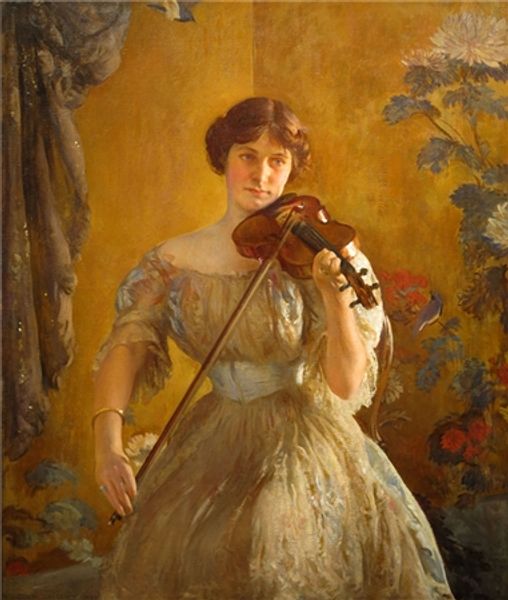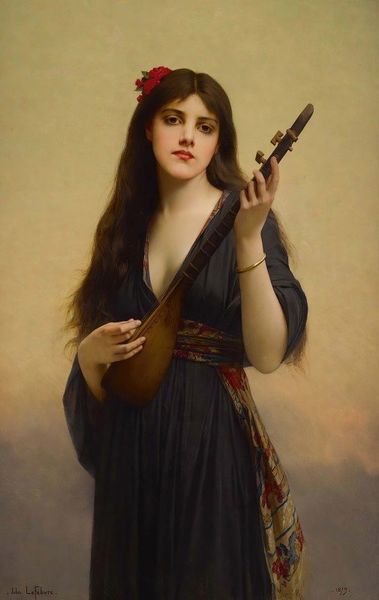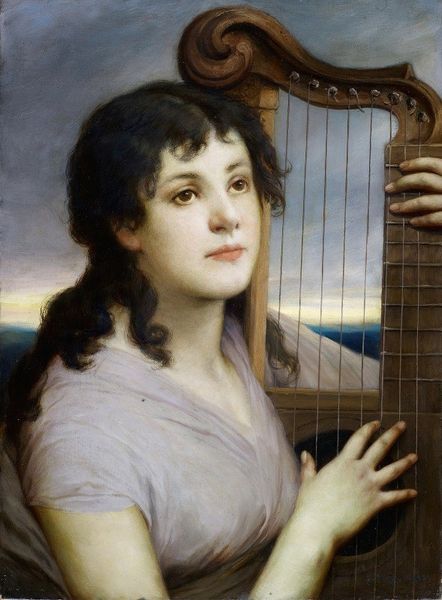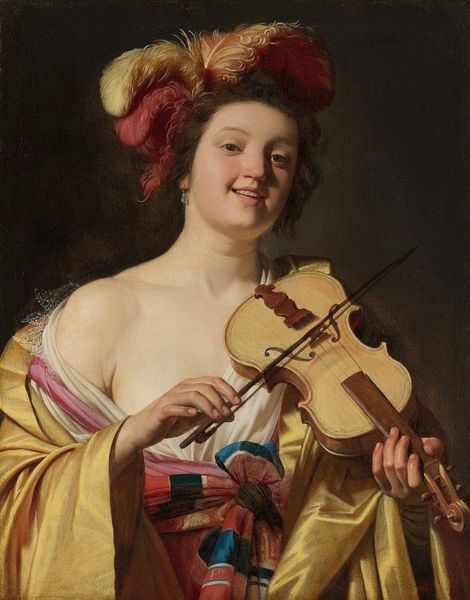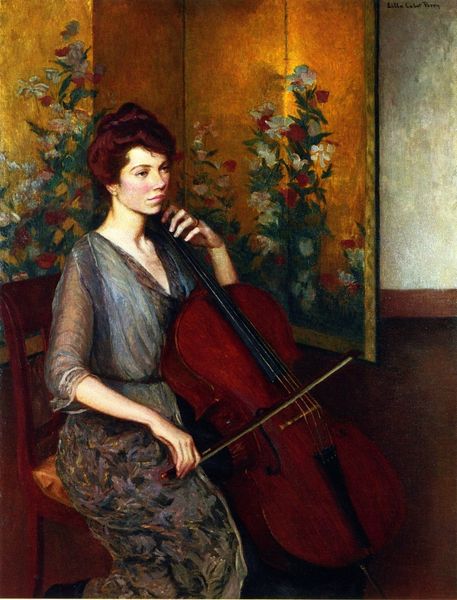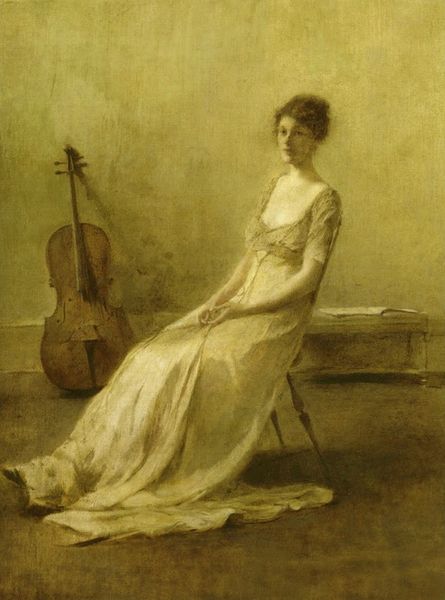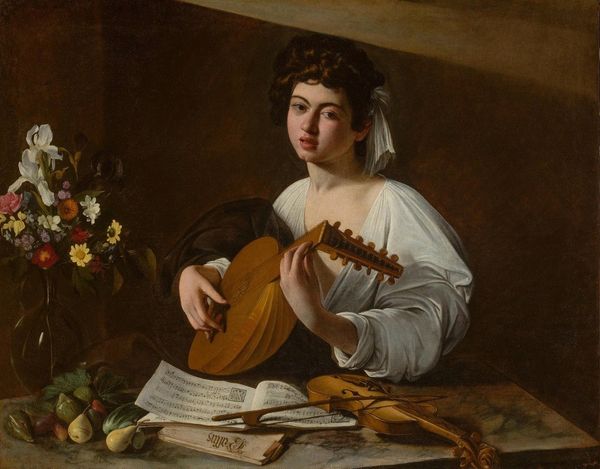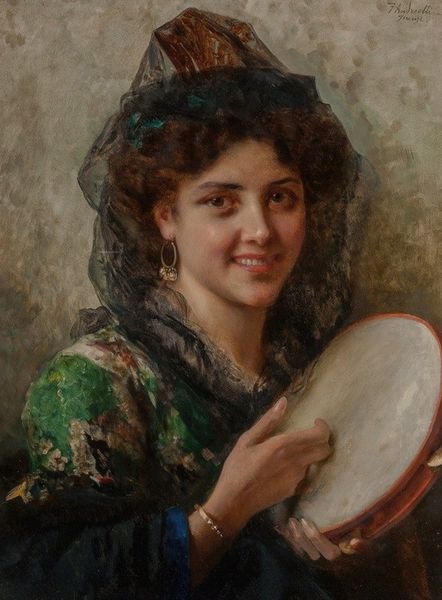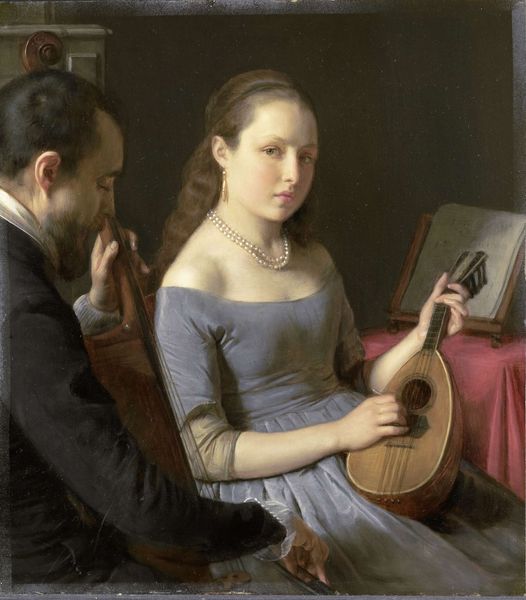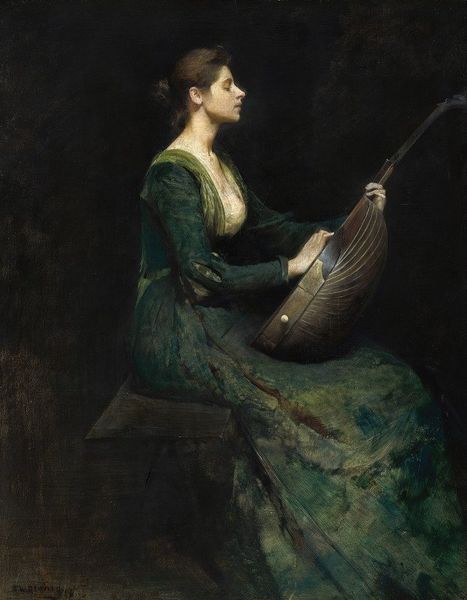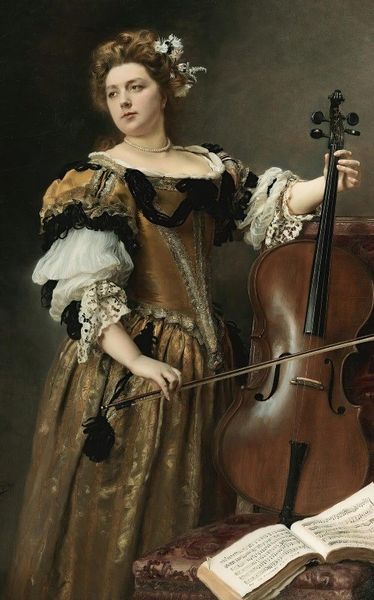
painting, oil-paint
#
portrait
#
painting
#
oil-paint
#
genre-painting
#
musical-instrument
#
realism
Dimensions: 35 x 46 cm
Copyright: Public domain
Curator: This is Edward John Poynter’s, "The Violinist," rendered in oil paint. It immediately strikes me as serene; the muted green backdrop and the subject’s calm gaze evoke a sense of quietude. Editor: Yes, the colour palette is carefully composed; the gentle blue-green and ivory in the garment is visually soft and refined. I would say it reveals a societal positioning. This era was a time when access to fine materials signified a woman’s value. The artist is celebrating materials associated with middle class women by immortalising the subject on the canvas. Curator: An interesting interpretation. The light in the painting draws our attention to the delicate hands holding the violin. It also suggests the musical capabilities of this young woman. I wonder about the place of this work within a wider societal understanding of musical production, performance, and what those practices looked like. The presence of the violin certainly encourages the viewer to create connections between culture, class and production of skill in those particular societal frameworks. Editor: Absolutely, this raises essential questions about who has the social capital and labour to perform leisure and beauty within historical and artistic canons. Do you think the painting does more than highlight societal norms? Does it contribute or comment on any sociopolitical conventions of the time? Curator: I suppose, yes. Poynter himself was involved in institutions like the National Art Training School. The formal composition of "The Violinist" speaks to the institutional values Poynter championed. So in essence the politics surrounding how one should perceive and evaluate "high art" are apparent throughout. I can’t say whether or not his artistic project was overtly concerned with critiquing the traditional academy and sociopolitical factors, but he himself would have understood those concepts of access in very personal and intimate ways, so yes perhaps that translates onto the canvas as well. Editor: That's well put, I also appreciate how the painting operates at the crossroads of different spheres of life—artistic expression, social performance, and institutional history—in the way that art always does. Curator: Indeed, a fascinating glimpse into a moment in time through the lens of art making.
Comments
No comments
Be the first to comment and join the conversation on the ultimate creative platform.
